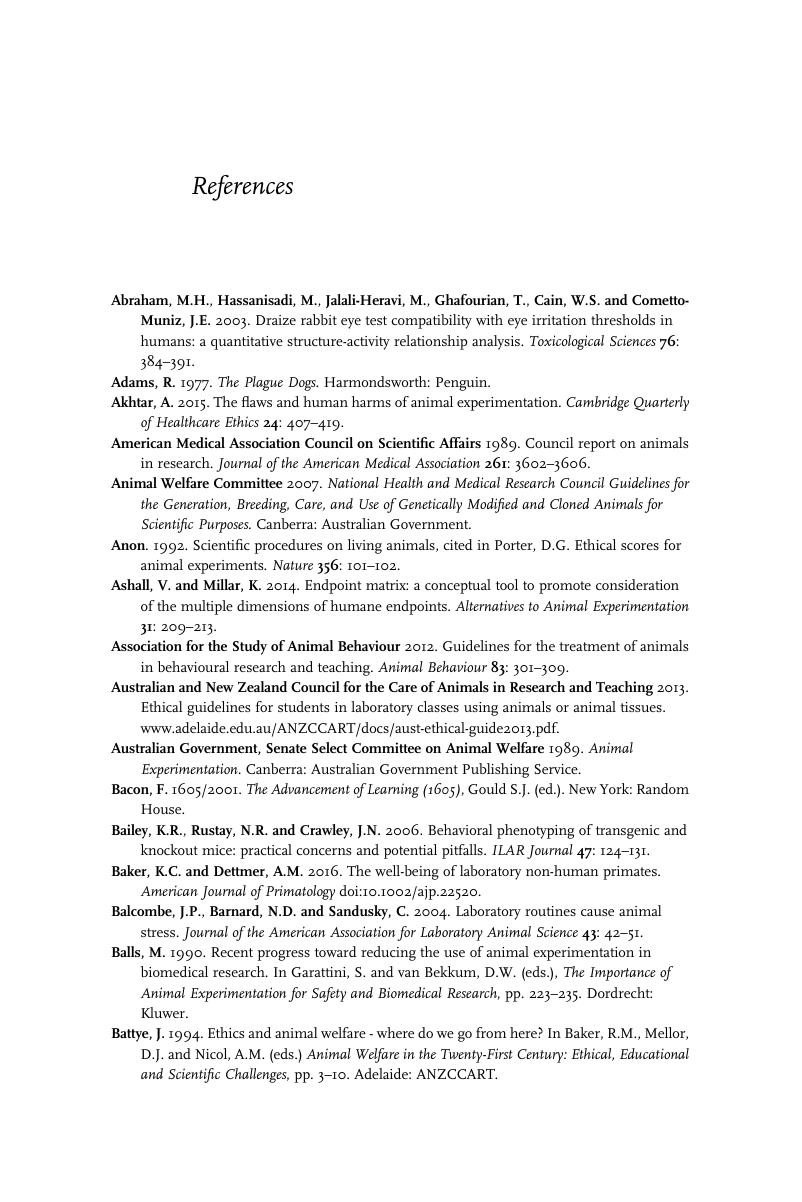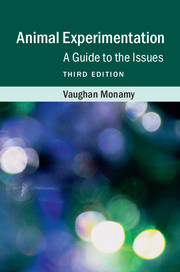Book contents
- Animal ExperimentationA Guide to the Issues, Third Edition
- Animal Experimentation
- Copyright page
- Dedication
- Contents
- Preface to the third edition
- Acknowledgements
- 1 Issues in animal experimentation
- 2 A history of animal experimentation
- 3 Opposition to animal experimentation
- 4 The moral status of animals
- 5 Animal use
- 6 The regulation of experiments
- 7 Seeking Alternatives
- 8 A future without animal experimentation?
- Ethical guidelines for students in laboratory classes involving the use of animals or animal tissues
- References
- Index
- References
References
Published online by Cambridge University Press: 16 March 2017
- Animal ExperimentationA Guide to the Issues, Third Edition
- Animal Experimentation
- Copyright page
- Dedication
- Contents
- Preface to the third edition
- Acknowledgements
- 1 Issues in animal experimentation
- 2 A history of animal experimentation
- 3 Opposition to animal experimentation
- 4 The moral status of animals
- 5 Animal use
- 6 The regulation of experiments
- 7 Seeking Alternatives
- 8 A future without animal experimentation?
- Ethical guidelines for students in laboratory classes involving the use of animals or animal tissues
- References
- Index
- References
Summary

Information
- Type
- Chapter
- Information
- Animal ExperimentationA Guide to the Issues, pp. 110 - 122Publisher: Cambridge University PressPrint publication year: 2017
